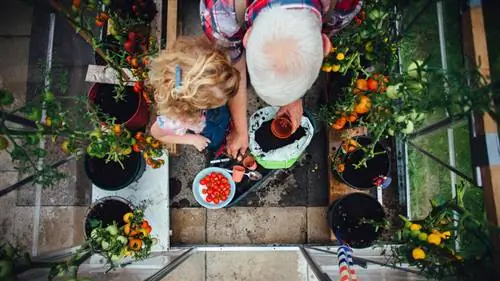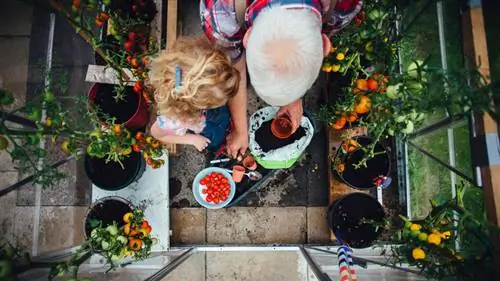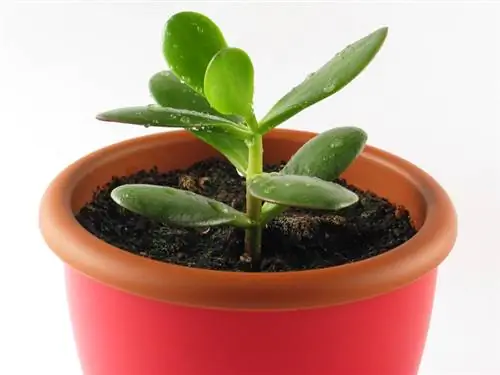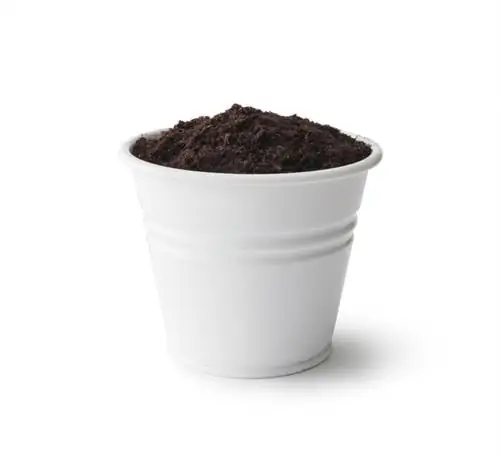- Author admin [email protected].
- Public 2023-12-16 16:46.
- Last modified 2025-06-01 06:02.
Before the first plants are planted, one of the most important growth conditions must be ensured with optimal soil for the greenhouse and precisely dosed additions of humus, compost and other substances. Garden owners should carry out a thorough soil analysis beforehand.

Which soil is ideal for a greenhouse?
The optimal soil for a greenhouse consists of a mixture of bark humus, garden compost and garden soil or wood fiber to ensure good soil structure, root penetration and nutrient supply. A soil analysis helps to determine the exact condition of the soil and avoid malnutrition.
Although the roots of plants growing under glass are not visible and grow underground, soil, compost, substrates and the soil used in a greenhouse are important for growth and well-being. Not to forget, a very he althysoil is inhabited by many useful creatures, which play an important role in the he althy cultivation of plants.
Soil for greenhouses and soil fertility
Basically, the soils for greenhouse plants do not differ from those for outdoor cultivation. The difference is made by thehigher soil temperatures under glass or foil, which allow the breakdown and conversion process of the soil components to proceed much more quickly. Soil fertility is mainly characterized by:
- the six levels of pH value (neutral to extremely acidic);
- the rootability of the soil for the greenhouse;
- the ability of soil to hold air and water;
- the Earth's warmability;
- the nutrient content and its continuous availability;
Soil analysis as a basis for productive planting
Laboratory examinations of soil samples from allotment gardens came to the conclusion that the majority of soils are supersaturated with potassium, phosphorus and calcium. The reason: Compost, manure, lime and mineral fertilizers mean that there are many more nutrients in the soil than plants can use. It is therefore advisable to have a soil analysis carried out in the laboratory, which reflects the actual condition of the greenhouse soil and helps to rule out malnutrition in the later plants. It is advisable to take samples (500 grams in total and well mixed!) atten different places in the greenhouse
Homemade soil for a greenhouse
If the result of the laboratory sample indicates an overall good structure of the soil, you can easily make your own greenhouse soil by adding substrates and other additives. The following overview shows some examples:
| Art | Mixture |
|---|---|
| Peat-free plant/potting soil | 25% bark humus, 25% garden compost, 50% garden soil or: 35% wood fiber, 30% bark humus, 25% garden compost, 10% clay |
| Sowing soil | 1/3 mature compost (compost soil), 1/3 washed quartz sand (0 to 3 mm), 1/3 peat |
| Soil for alpine plants | 1/3 mature compost (compost soil), 1/3 good garden soil, 1/3 peat - possibly with sand |
| Cactus soil | 1/3 sand, 1/3 lava or primary rock grit or expanded clay granules, 1/3 standard soil |
| Soil for propagating cuttings | 1/2 peat, 1/2 washed quartz sand |
| Plant / potting soil | 1/3 mature compost (compost soil) or bark humus, 1/3 good garden soil, 1/3 peat |
Source: “The small greenhouse - technology and use” Verlag Eugen Ulmer, 70599 Stuttgart
Tip
The soil for your greenhouse can also be easily improved at certain intervals by planting green manure plants in the meantime. Particularly good values can be achieved with spelled, broad beans, alfalfa and winter vetch.






